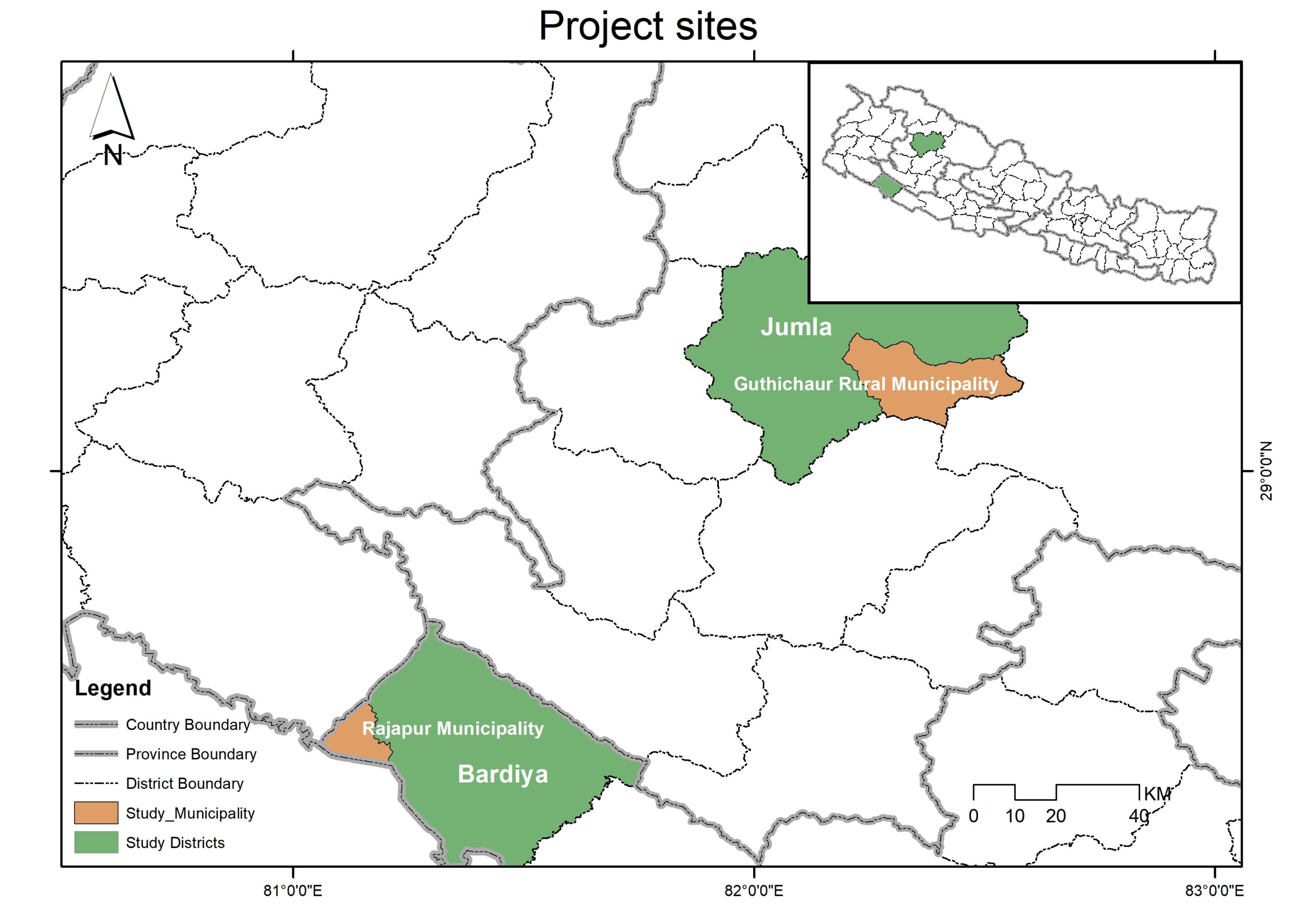Improving Climate Services for Local Adaptation through Customized and Location-Specific Weather Forecasts


There have been erratic weather patterns and Nepal is unprepared to cope with them. In recent years, Nepal has experienced an increase in frequency and intensity of droughts, floods, and landslides, which have caused damage to crops, infrastructure, and homes. There have been a series of instances where there is no proper weather information dissemination amongst the locals of Nepal which has caused unfortunate losses and damages. For instance, the event in October 2021 – unseasonal rainfall damaged paddy crops worth around 8.26 billion Nepali Rupees (Prasain, 2021). Another event from early November 2023, documented in the video that surfaced on social media, shows the significant loss of rice harvested in a field due to unexpected rainfall in Koshi Province. Hence, there is an urgent need for the dissemination of localized weather and climate information to better integrate such information into decision-making processes. Localized weather and climate information can help farmers make informed decisions about planting schedules and irrigation practices, can help disaster managers prepare for and respond to extreme weather events, and can help communities develop long-term adaptation plans. This will allow individuals, communities, and organizations to make more informed decisions about how to adapt to the impacts of climate change. The increasing erratic pattern of weather, occurrence of heavy rain, hailstorms, droughts, and climate-induced disasters are posing a significant threat to the livelihoods disrupting economic activities and straining local resources. Adapting to such changes and building resilience of the local communities that are more vulnerable to climate change impacts is one of the major challenges. However, climate adaptation in Nepal has received increasing attention, with recent initiatives aiming to increase resilience to climate change, less focus has been given to weather and climate information dissemination to the end users. Due to the lack of proper dissemination of weather and climate information, various sectors such as agriculture and farming, disaster management, infrastructure and construction, energy, tourism, and business are being affected and are unable to make timely informed decisions. Therefore, there is an urgent need for the dissemination of localized weather and climate information to better integrate such information into planning and decision-making processes.
Though DHM now produces short (3 days) and medium-range (7 days) weather forecasts, there is still a lack of dissemination mechanism to the end users such as farmers and communities. Currently, DHM issues three-day weather forecasts every day and special weather bulletins if it sees the likelihood of severe weather events. In 2018, the DHM began using Numerical Weather Prediction (NWP) and weather alerts to support weather-induced disaster risk reduction. The alerts provide an additional lead time for disaster managers and at-risk communities to take precautionary actions against severe weather events. Many farmers do not have access to these forecasts and the alerts, and even those who do often find it difficult to understand the technical language of weather forecasts.
In addition to DHM’s weather forecasts, SEN will explore the SERVIR Hindu Kush Himalaya (SERVIR-HKH) initiative’s High-Impact Weather Assessment Toolkit (HIWAT) system. SERVIR-HKH, a joint initiative of NASA and USAID, is implemented by the ICIMOD. Recognizing the need for collaboration and data integration, the proposal includes investigating the implementation of SERVIR HKH’s HIWAT. Using HIWAT’s open data policy and proven forecasts, this integration promises to improve the dependability of weather information distribution. Despite these forecasts, most of the people in Nepal are not able to comprehend and analyze the weather forecasts, so there is a need to customize the technical information to a simple and user-friendly format and disseminate it to the end-users.